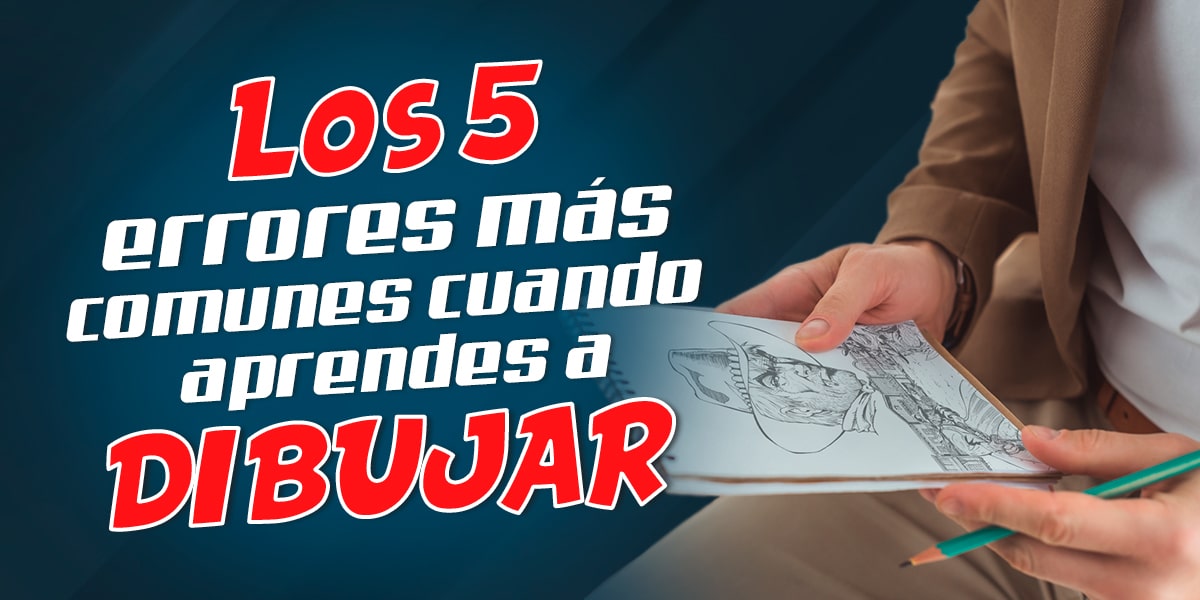LOS 9 LIBROS QUE TODO HISTORIETISTA DEBE TENER
¿Alguna vez te has preguntado cuáles son los secretos mejor guardados de los grandes maestros del cómic? ¿Qué libros han inspirado a los artistas más influyentes de la industria? Prepárate para descubrir una selección de obras que no solo transformarán tu perspectiva sobre el arte secuencial, sino que también potenciarán tus habilidades como creador. En este viaje a través de las páginas más reveladoras del mundo del cómic, desvelaremos los 9 libros imprescindibles que todo historietista debe tener en su biblioteca. ¿Estás listo para elevar tu arte al siguiente nivel?
Por Ferrari
La alquimia del éxito: Cuando el talento se fusiona con el conocimiento
En el fascinante universo de la creación de historietas, existe una verdad innegable: el talento por sí solo no es suficiente para alcanzar la cima. La verdadera magia ocurre cuando el don natural se combina con el estudio constante y la dedicación. Es como si cada trazo del lápiz fuera una semilla que, nutrida por el conocimiento, florece en páginas llenas de vida y narrativa cautivadora.
Imagina por un momento que tu talento es un lienzo en blanco. Ahora, piensa en el conocimiento como los pinceles y las pinturas que darán forma y color a tu visión. Sin las herramientas adecuadas, incluso el artista más dotado se encontrará limitado. Es aquí donde entra en juego la importancia de sumergirse en el legado de los grandes maestros del pasado y en las investigaciones vanguardistas del presente.
Para truly dominar el arte del cómic, es esencial nutrir tanto tus habilidades técnicas de dibujo como tu comprensión del lenguaje único de la historieta. Es un viaje de descubrimiento donde cada página leída, cada concepto aprendido, se convierte en una nueva pincelada en tu paleta creativa. ¿Listo para dar el salto y potenciar tu creatividad? Descubre cómo aquí.
En este artículo, te revelaremos los 9 libros que se convertirán en tus aliados indispensables en tu camino hacia la excelencia como historietista. Cada uno de ellos es una llave que abre puertas a nuevos mundos de posibilidades creativas. ¿Estás preparado para explorar estos tesoros del conocimiento?
1. El ABC del cómic: “Cómo Hacer un Cómic” de Scott McCloud
Imagina tener acceso a una enciclopedia viviente del cómic, un compendio que no solo te enseña, sino que te inspira con cada página. Eso es exactamente lo que ofrece “Cómo Hacer un Cómic” de Scott McCloud. Este libro no es simplemente un manual; es una experiencia inmersiva que te sumerge en el corazón palpitante del arte secuencial.
McCloud, con su ingenio y profundo conocimiento, ha creado lo que muchos consideran la “Biblia del cómic”. ¿Pero qué hace que este libro sea tan especial? Es su capacidad única de desmenuzar los componentes más complejos del cómic y presentarlos de una manera tan accesible que incluso un novato puede comprenderlos, mientras que un profesional experimentado encuentra nuevas perspectivas para reflexionar.
Lo que realmente distingue a este libro es su formato: un ensayo completo realizado íntegramente en forma de cómic. McCloud no solo predica, sino que practica, demostrando con cada viñeta los principios que explica. Desde la anatomía de una página hasta los sutiles matices de la narración visual, cada concepto cobra vida ante tus ojos.
Este libro aborda temas cruciales como:
- La evolución histórica del cómic y sus hitos más significativos
- Técnicas avanzadas de dibujo y composición
- El arte de la narración visual y el flujo de la historia
- Cómo crear personajes memorables y mundos convincentes
- La psicología detrás de la percepción del lector y cómo aprovecharla
Para el historietista novato, “Cómo Hacer un Cómic” es como un mapa del tesoro que revela los secretos del oficio. Para el artista experimentado, es una fuente constante de inspiración y un recordatorio de los fundamentos que hacen grande al cómic. Y para los educadores e investigadores, es una herramienta invaluable que ofrece una visión profunda y bien documentada sobre este arte multifacético.
¿Quieres llevar tus habilidades al siguiente nivel? Explora recursos adicionales aquí y complementa tu aprendizaje con ejercicios prácticos que refuercen los conceptos de McCloud.
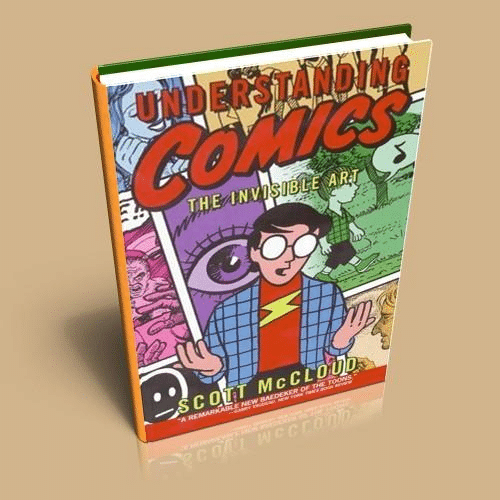
2. La sabiduría del maestro: “El cómic y el arte secuencial” de Will Eisner
Cuando hablamos de gigantes en el mundo del cómic, pocos nombres resuenan con tanta fuerza como el de Will Eisner. Su libro “El cómic y el arte secuencial” no es solo un texto; es un legado vivo que continúa moldeando la forma en que entendemos y creamos historietas. Imagina tener acceso directo a las enseñanzas de un verdadero maestro del medio, alguien que no solo dominó el arte, sino que también lo reinventó.
Este libro es el destilado de años de experiencia y sabiduría, nacido de las clases que Eisner impartió en la prestigiosa New York’s School of Visual Art. Cada página está impregnada con la pasión y el conocimiento de un hombre que dedicó su vida a elevar el cómic al estatus de arte respetado que tiene hoy.
¿Qué hace que este libro sea tan especial? Es su capacidad de desgranar los elementos más complejos de la narración visual y presentarlos de una manera que es a la vez profunda y accesible. Eisner no solo te dice cómo hacer un cómic; te muestra por qué funciona cada elemento y cómo puedes usarlo para contar historias más poderosas.
Algunos de los temas cruciales que aborda incluyen:
- La anatomía de una página de cómic y cómo optimizar su diseño
- El arte de la composición y el encuadre para maximizar el impacto narrativo
- Técnicas avanzadas de caracterización y expresión facial
- La sinergia entre texto e imagen en la narración secuencial
- Cómo manejar el tiempo y el ritmo en la narrativa visual
Para el historietista en ciernes, este libro es como tener un mentor personal guiándote a través de los intrincados caminos del arte secuencial. Para el profesional establecido, es una fuente constante de inspiración y un recordatorio de los principios fundamentales que hacen grande al cómic. Y para los académicos y entusiastas, ofrece una visión profunda de la mecánica y la filosofía detrás de este medio único.
¿Ansioso por aplicar las enseñanzas de Eisner? Haz clic aquí para acceder a recursos prácticos que te ayudarán a implementar estas técnicas en tu propio trabajo.
La belleza de “El cómic y el arte secuencial” radica en su atemporalidad. A pesar de los avances tecnológicos y los cambios en las tendencias, los principios que Eisner establece siguen siendo tan relevantes hoy como cuando el libro se publicó por primera vez. Es un testimonio del profundo entendimiento que Eisner tenía no solo del cómic como medio, sino de la narrativa visual como lenguaje universal.
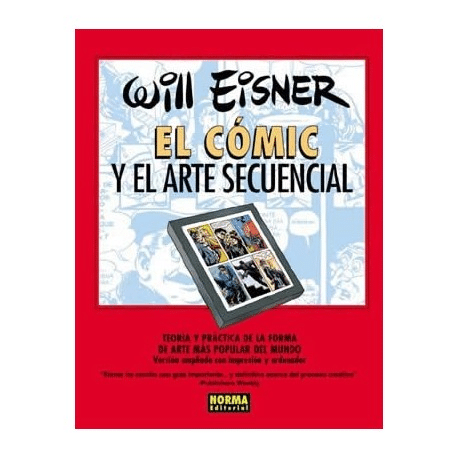
3. Desenterrando las raíces: “Töpffer, the Man who Invented the Comics” por Thierry Groensteen
Imagina poder viajar en el tiempo y presenciar el nacimiento del cómic moderno. Aunque no tengamos una máquina del tiempo, Thierry Groensteen nos ofrece lo siguiente mejor con su fascinante obra “Töpffer, the Man who Invented the Comics”. Este libro es como una cápsula del tiempo que nos transporta a los albores del arte secuencial, revelando las semillas de lo que hoy conocemos y amamos como cómics.
Groensteen, reconocido como uno de los críticos más agudos del noveno arte, nos presenta una obra que es tanto un homenaje como una investigación profunda. A diferencia de los libros más prácticos sobre creación de cómics, este texto se sumerge en las aguas profundas de la teoría y la historia, ofreciendo una perspectiva única sobre los orígenes de nuestro amado medio.
El protagonista de esta historia es Rodolphe Töpffer (1799-1846), un visionario suizo que, sin saberlo, sentó las bases de lo que eventualmente se convertiría en el cómic moderno. Töpffer acuñó el término “literatura dibujada” para describir su innovadora forma de contar historias, una fusión de texto e imagen que revolucionaría la narrativa visual.
¿Qué hace que este libro sea tan valioso para el historietista moderno?
- Ofrece una comprensión profunda del contexto histórico en el que nació el cómic
- Analiza los escritos teóricos de Töpffer, revelando insights sorprendentemente modernos
- Presenta abundantes ilustraciones que muestran la evolución temprana del lenguaje del cómic
- Proporciona una base sólida para entender cómo y por qué el cómic se desarrolló como lo hizo
- Demuestra cómo el humor y la narrativa de Töpffer siguen siendo relevantes en la actualidad
Aunque el estilo de Groensteen es más académico que el de otros autores en esta lista, su pasión por el tema y su habilidad para desentrañar conceptos complejos hacen que la lectura sea accesible y fascinante. Para el historietista serio, este libro es como descubrir el eslabón perdido en la evolución del cómic.
¿Listo para sumergirte en las raíces del cómic? Descubre más recursos históricos aquí y enriquece tu comprensión del medio con una perspectiva histórica única.
Comprender de dónde venimos es crucial para saber hacia dónde vamos. “Töpffer, the Man who Invented the Comics” no solo nos muestra el pasado del cómic, sino que también ilumina su futuro. Al estudiar las innovaciones de Töpffer y las reflexiones de Groensteen, los historietistas modernos pueden encontrar inspiración para empujar los límites del medio en nuevas y emocionantes direcciones.
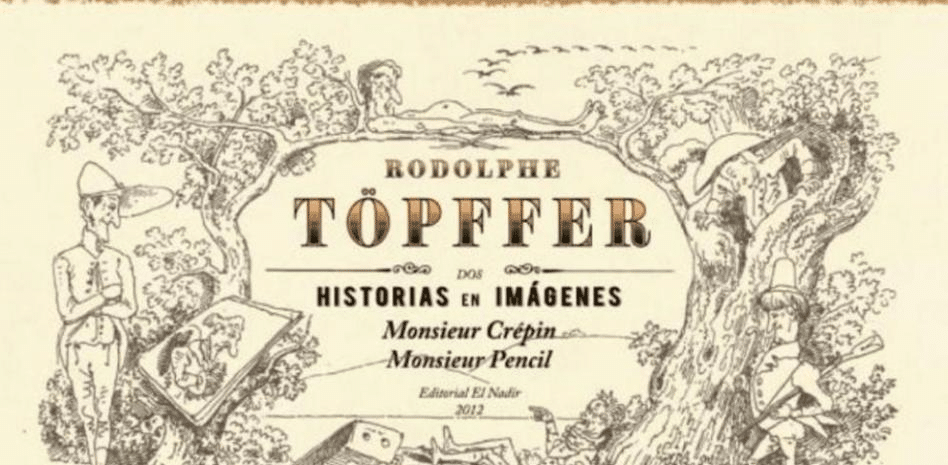
4. El arte de dar vida al papel: “Successful Drawing” de Andrew Loomis
Imagina tener un mentor personal, un maestro del dibujo que te guía paso a paso para transformar tus ideas en imágenes vibrantes y llenas de vida. Eso es exactamente lo que ofrece “Successful Drawing” de Andrew Loomis. Este libro no es solo un manual de instrucciones; es una puerta de entrada a un mundo donde tus creaciones cobran una dimensión y una profundidad que antes parecían inalcanzables.
Loomis, reconocido ilustrador, diseñador y publicista, destila en estas páginas décadas de experiencia y conocimiento. Su enfoque no se limita a enseñarte cómo dibujar; te muestra cómo ver el mundo con los ojos de un artista y cómo plasmar esa visión en el papel de manera convincente y hermosa.
¿Qué hace que “Successful Drawing” sea un tesoro para todo aspirante a historietista?
- Dominio del dibujo tridimensional: Aprende a dar volumen y profundidad a tus personajes y escenarios.
- Comprensión de planos y composición: Descubre cómo organizar tus elementos visuales para un máximo impacto.
- Manejo de escalas y proporciones: Perfecciona la relación entre los elementos de tu dibujo para crear escenas coherentes y realistas.
- Control de luces y sombras: Domina las técnicas para dar dramatismo y atmósfera a tus ilustraciones.
- Uso efectivo del color y los tonos: Aprende a utilizar la paleta cromática para reforzar la narrativa y el estado de ánimo de tus escenas.
Lo que distingue a este libro es su enfoque gradual y bien estructurado. Loomis entiende que el aprendizaje del dibujo es un viaje, y ha diseñado sus lecciones para acomodar a artistas de todos los niveles. Ya seas un principiante que apenas comienza a explorar el mundo del dibujo o un artista experimentado buscando refinar tus habilidades, encontrarás valor en cada página.
¿Ansioso por llevar tus habilidades de dibujo al siguiente nivel? Explora recursos adicionales aquí y complementa las enseñanzas de Loomis con ejerciciosprácticos diseñados para reforzar cada concepto.
Una de las mayores fortalezas de “Successful Drawing” es su capacidad para desmitificar aspectos del dibujo que a menudo parecen intimidantes para los principiantes. Loomis tiene un don para explicar conceptos complejos de manera clara y accesible, acompañando sus explicaciones con ilustraciones detalladas que sirven como ejemplos visuales de sus enseñanzas.
Para el historietista, este libro es particularmente valioso porque no se limita a enseñar cómo dibujar objetos o figuras aisladas. Loomis enfatiza la importancia de la narrativa visual, mostrando cómo utilizar las técnicas de dibujo para contar historias más efectivas. Aprenderás a crear escenas dinámicas, a transmitir emociones a través de la postura y la expresión de tus personajes, y a utilizar el entorno para reforzar la atmósfera de tu narrativa.
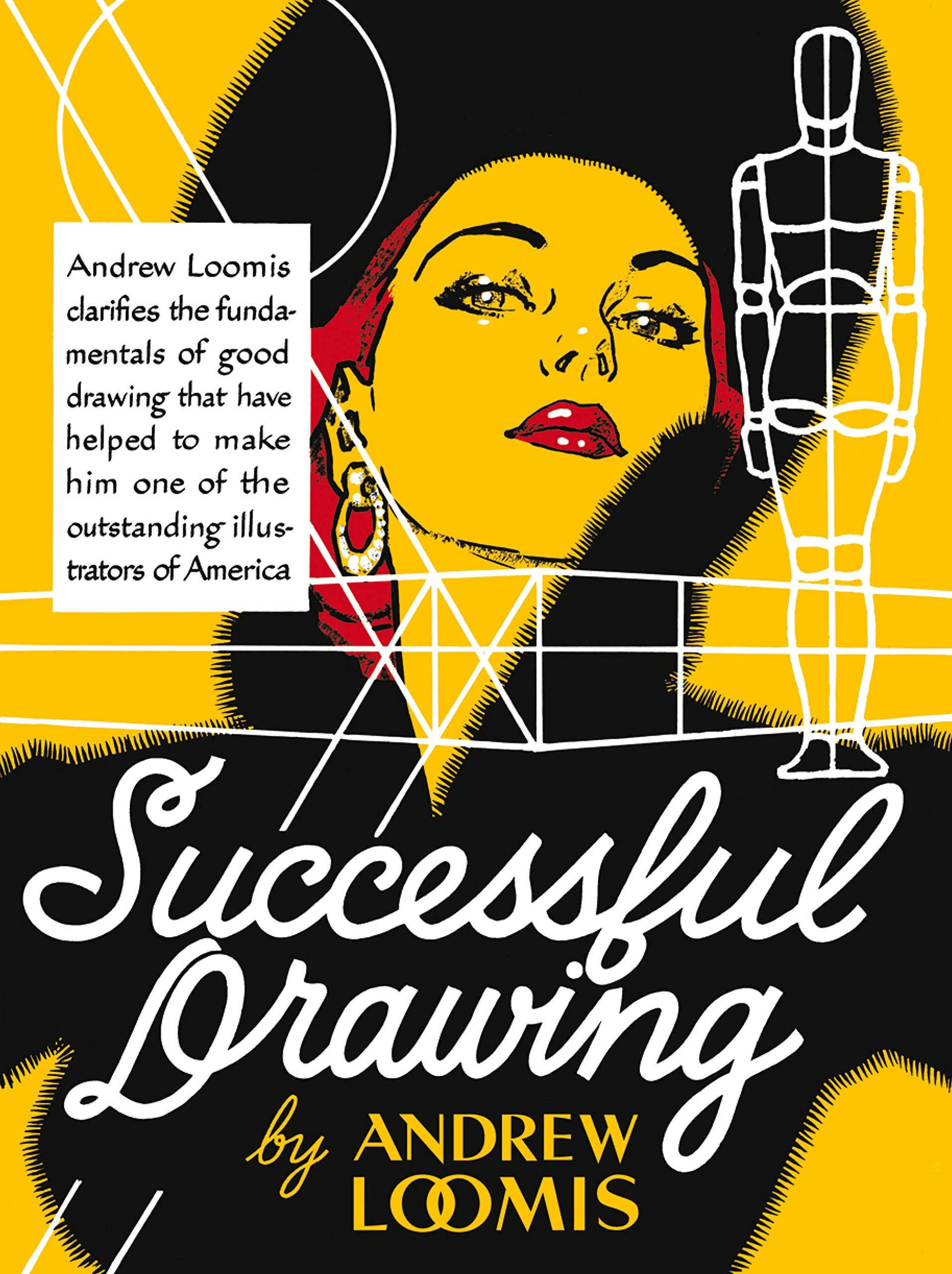
5. El arte de tejer historias: “Panel One: Comic Book Scripts by Top Writers” de Nat Gertler
Imagina tener acceso a los planos arquitectónicos de los rascacielos más impresionantes del mundo. Ahora, traslada esa idea al universo del cómic. “Panel One: Comic Book Scripts by Top Writers”, compilado por Nat Gertler, es exactamente eso: una mirada íntima a los cimientos sobre los que se construyen las grandes historietas.
En el mundo del cómic, el guión es el esqueleto invisible que sostiene toda la obra, pero rara vez tenemos la oportunidad de ver estos documentos cruciales. Gertler nos abre una puerta a este mundo oculto, ofreciéndonos una colección diversa y fascinante de guiones de algunos de los nombres más respetados en la industria.
¿Qué hace que este libro sea un tesoro para todo aspirante a historietista?
- Diversidad de estilos: Descubre cómo autores como Neil Gaiman, Jeff Smith y Kurt Busiek abordan la escritura de guiones.
- Insights de los creadores: Los autores comparten comentarios sobre su proceso creativo y el contexto de producción.
- Análisis detallado: Gertler y los propios autores ofrecen análisis profundos de las obras presentadas.
- Variedad de formatos: Explora diferentes enfoques para estructurar y presentar un guión de cómic.
- Conexión entre guión y arte final: Observa cómo las palabras en el papel se transforman en vibrantes páginas de cómic.
Para el escritor de cómics en ciernes, este libro es como un mapa del tesoro. Te muestra no solo cómo los profesionales estructuran sus historias, sino también cómo comunican sus visiones a los artistas. Aprenderás sobre la importancia de la economía del lenguaje, cómo describir efectivamente una escena y cómo equilibrar el diálogo con la acción visual.
¿Ansioso por perfeccionar tus habilidades de guionista? Descubre herramientas adicionales aquí para complementar lo aprendido en “Panel One” y dar vida a tus propias historias.
Pero este libro no es solo para escritores. Los artistas visuales encontrarán en él una valiosa perspectiva sobre cómo interpretar y traducir las palabras en imágenes dinámicas. Comprender el proceso de escritura puede ayudarte a colaborar más efectivamente con los guionistas y a tomar decisiones visuales más informadas.
Para los aficionados al cómic, “Panel One” ofrece una mirada fascinante tras bambalinas de sus obras favoritas. Es como tener acceso al “detrás de cámaras” de las grandes producciones de cómic, revelando el intrincado proceso creativo que da vida a los personajes y mundos que amamos.
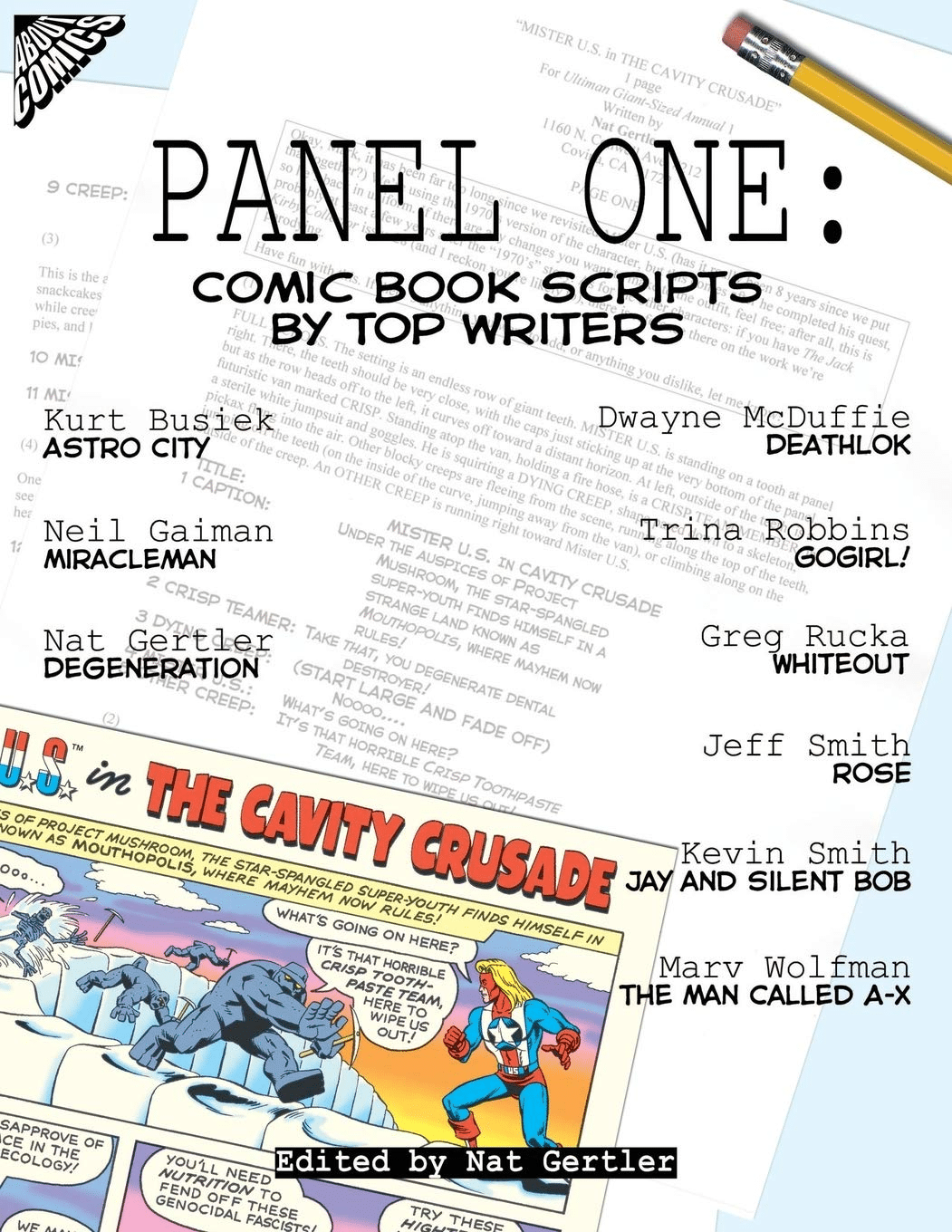
6. Descifrando el ADN del cómic: “The System of Comics” de Thierry Groensteen
Imagina tener en tus manos un microscopio capaz de revelar la estructura molecular del cómic. Eso es precisamente lo que ofrece “The System of Comics” de Thierry Groensteen. Este libro no es una lectura ligera, sino un viaje profundo al corazón de lo que hace que el cómic sea un medio único y poderoso.
Groensteen, reconocido teórico y crítico del cómic, nos presenta una obra que desafía nuestras percepciones y nos invita a ver el arte secuencial desde una perspectiva completamente nueva. Este libro no se conforma con explicar cómo hacer cómics; va más allá, explorando por qué los cómics funcionan como lo hacen y qué los distingue como forma de expresión artística.
¿Qué hace que “The System of Comics” sea una lectura esencial para el historietista serio?
- Análisis profundo del lenguaje del cómic: Descubre cómo los elementos visuales y textuales interactúan para crear significado.
- Exploración de la “arthrología”: Comprende cómo las relaciones entre viñetas y páginas construyen la narrativa.
- Estudio de la “espaciotopía”: Aprende cómo el espacio y la disposición en la página influyen en la lectura y la interpretación.
- Conceptos avanzados de narración visual: Profundiza en técnicas sofisticadas para contar historias a través de imágenes.
- Fundamentación teórica del cómic como arte: Obtén argumentos sólidos para defender y elevar el estatus del cómic en el mundo del arte.
Si bien este libro puede resultar desafiante para algunos lectores debido a su naturaleza académica, ofrece recompensas invaluables para aquellos dispuestos a sumergirse en sus profundidades. Groensteen no solo expande los conceptos introducidos por pioneros como Scott McCloud y Will Eisner, sino que también introduce nuevas formas de pensar sobre la mecánica y la estética del cómic.
¿Listo para elevar tu comprensión teórica del cómic? Explora recursos complementarios aquí y lleva tu creación de historietas a nuevas alturas conceptuales.
Para el historietista que busca perfeccionar su oficio, “The System of Comics” ofrece herramientas analíticas que pueden transformar la forma en que abordas la creación. Comprender la “gramática” subyacente del cómic te permitirá manipular estos elementos con mayor precisión y efecto, resultando en narrativas más ricas y sofisticadas.
Además, este libro es particularmente valioso para aquellos interesados en la teoría y la crítica del cómic. Proporciona un marco sólido para analizar y discutir obras de cómic, elevando el discurso sobre este medio a un nivel académico respetable. Para educadores, investigadores y defensores del cómic como forma de arte, “The System of Comics” es una herramienta indispensable en su arsenal intelectual.
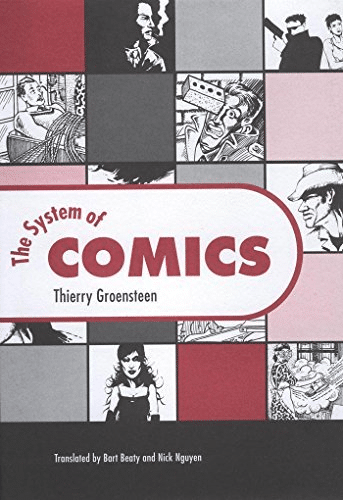
7. El poder divino del lápiz: “Do the Gods Wear Capes? Spirituality, Fantasy and Superheroes” de Ben Saunders
Imagina un libro que te lleve a un viaje fascinante a través del cosmos de los superhéroes, revelando las profundas corrientes espirituales y filosóficas que fluyen bajo la superficie de tus historietas favoritas. Eso es exactamente lo que ofrece “Do the Gods Wear Capes? Spirituality, Fantasy and Superheroes” de Ben Saunders.
Este libro no es simplemente otro análisis superficial de la mitología de los superhéroes. Saunders nos invita a sumergirnos en las profundidades metafísicas del género, explorando cómo estos personajes icónicos encarnan y reflejan nuestras más profundas creencias y aspiraciones espirituales.
¿Qué hace que este libro sea una lectura imprescindible para historietistas, guionistas y aficionados por igual?
- Análisis literario agudo: Descubre cómo los cómics de superhéroes se entrelazan con temas filosóficos y espirituales complejos.
- Exploración de la cultura popular: Comprende cómo los superhéroes reflejan y moldean nuestros valores culturales.
- Conexiones mitológicas profundas: Aprende cómo los superhéroes modernos se conectan con arquetipos mitológicos antiguos.
- Reflexión sobre el poder y la responsabilidad: Examina cómo los cómics abordan cuestiones éticas fundamentales.
- Nuevas perspectivas sobre personajes icónicos: Mira a Superman, Wonder Woman y otros héroes bajo una nueva luz filosófica.
Saunders va más allá de las comparaciones superficiales entre superhéroes y figuras mitológicas. Nos muestra cómo estos personajes encarnan preguntas fundamentales sobre la naturaleza del bien y el mal, el poder y la responsabilidad, la identidad y la transformación. Para el creador de cómics, este libro ofrece una rica fuente de inspiración para desarrollar personajes y tramas con mayor profundidad y resonancia.
¿Ansioso por explorar la dimensión espiritual de tus creaciones? Descubre recursos adicionales aquí para infundir mayor profundidad filosófica en tus historietas.
Lo que hace que “Do the Gods Wear Capes?” sea particularmente valioso es su capacidad para revelar la complejidad y la riqueza intelectual de un género a menudo subestimado. Saunders demuestra que los cómics de superhéroes no son mero entretenimiento escapista, sino vehículos para explorar algunas de las preguntas más profundas de la existencia humana.
Para el guionista, este libro ofrece una nueva perspectiva sobre cómo abordar temas universales a través de la lente del género de superhéroes. Te desafiará a pensar más allá de las convenciones y a crear historias que resuenen en un nivel más profundo con tus lectores.
Incluso si no eres un fan acérrimo de los superhéroes, este libro te hará apreciar la profundidad y la complejidad del medio. Te sorprenderá descubrir cuánto pueden revelar estos personajes coloridos sobre nuestra propia humanidad y nuestras aspiraciones más elevadas.
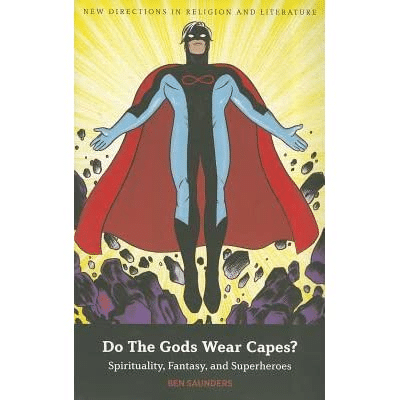
8. Un viaje a través del tiempo y el espacio del cómic: “A Comics Studies Reader” de Heer y Worcester
Imagina tener acceso a una máquina del tiempo que te permitiera explorar la evolución del cómic a lo largo de su historia, desde sus humildes comienzos hasta sus expresiones más vanguardistas. Eso es precisamente lo que ofrece “A Comics Studies Reader”, editado por Jeet Heer y Kent Worcester. Este libro es como una cápsula del tiempo literaria que recopila algunas de las voces más influyentes y perspicaces en el estudio del cómic.
¿Qué hace que este compendio sea una joya indispensable para cualquier entusiasta o creador de cómics?
- Diversidad histórica: Desde los escritos pioneros de Töpffer hasta las reflexiones contemporáneas de Chris Ware.
- Perspectiva global: Incluye textos sobre manga japonés, cómics latinoamericanos y europeos, ofreciendo una visión verdaderamente internacional.
- Variedad de enfoques: Abarca desde análisis históricos hasta estudios culturales y crítica literaria.
- Evolución del medio: Traza el desarrollo del cómic desde sus orígenes hasta su estado actual como forma de arte respetada.
- Profundidad académica: Proporciona una base sólida para quienes deseen adentrarse en el estudio formal del cómic.
Este libro es como una conversación a través del tiempo y el espacio, donde los pioneros del cómic dialogan con los teóricos contemporáneos. Para el historietista, es una oportunidad única de comprender el contexto histórico y cultural en el que se desarrolla su arte. Conocer las raíces y la evolución del medio puede inspirar nuevas direcciones creativas y una apreciación más profunda de las posibilidades del cómic.
¿Listo para sumergirte en la rica historia del cómic? Descubre recursos complementarios aquí y enriquece tu comprensión del medio con perspectivas históricas y culturales únicas.
Lo que hace que “A Comics Studies Reader” sea particularmente valioso es su capacidad para tender puentes entre diferentes tradiciones y culturas del cómic. Al explorar las similitudes y diferencias entre los cómics de distintas partes del mundo, los lectores pueden obtener una comprensión más rica y matizada de este arte global.
Para los aspirantes a académicos o investigadores del cómic, este libro es una puerta de entrada al mundo de los estudios formales sobre el medio. Proporciona una base sólida de textos fundamentales y introduce los debates y discusiones clave que han moldeado el campo de estudio.
Incluso para el lector casual, “A Comics Studies Reader” ofrece fascinantes perspectivas que pueden transformar la manera en que se leen y aprecian loscómics. Descubrirás nuevas capas de significado en tus obras favoritas y desarrollarás un ojo más crítico para apreciar la artesanía detrás de cada página.
Este compendio no solo es una lectura fascinante, sino también una herramienta invaluable para cualquiera que desee profundizar en el mundo del cómic más allá de la superficie. Ya seas un creador buscando inspiración, un educador desarrollando un plan de estudios, o simplemente un aficionado curioso, “A Comics Studies Reader” te ofrece un viaje enriquecedor a través de la historia y la teoría del noveno arte.
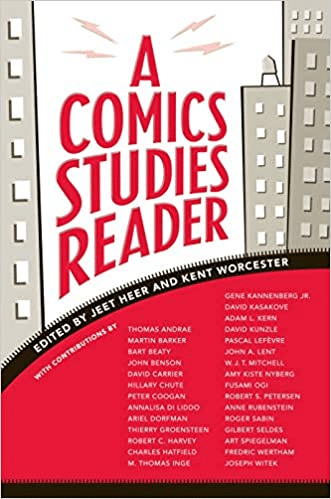
9. El arte de dibujar con alegría: “Fun with a Pencil” de Andrew Loomis
Imagina un libro que no solo te enseñe a dibujar, sino que también te haga sonreír en cada página. Eso es exactamente lo que ofrece “Fun with a Pencil” de Andrew Loomis. Publicado originalmente en 1939, este clásico atemporal sigue siendo tan relevante y encantador hoy como lo fue hace más de 80 años.
¿Qué hace que “Fun with a Pencil” sea una joya indispensable para cualquier aspirante a artista del cómic?
- Enfoque lúdico: Loomis transforma el aprendizaje del dibujo en una aventura divertida y accesible.
- Instrucciones paso a paso: Desde formas básicas hasta retratos detallados, el libro guía al lector con claridad y paciencia.
- Versatilidad: Abarca desde caricaturas hasta dibujos realistas, proporcionando una base sólida para diversos estilos.
- El encantador Profesor Blook: El alter ego de Loomis actúa como un guía amigable a lo largo del libro.
- Principios fundamentales: Enseña conceptos esenciales de proporción, perspectiva y composición de manera intuitiva.
Lo que distingue a “Fun with a Pencil” es su capacidad para desmitificar el proceso de dibujo. Loomis comienza con formas simples como círculos y óvalos, y gradualmente muestra cómo estas se pueden transformar en rostros expresivos y figuras dinámicas. Este enfoque paso a paso no solo construye habilidades técnicas, sino que también fomenta la confianza del artista principiante.
¿Ansioso por explorar el mundo del dibujo con una sonrisa? Descubre recursos adicionales aquí para complementar tu viaje artístico con el espíritu juguetón de Loomis.
Para el aspirante a historietista, este libro es un tesoro de conocimientos fundamentales. Aprender a dibujar expresiones faciales, capturar la personalidad en un retrato, y entender cómo las formas básicas se combinan para crear figuras complejas son habilidades esenciales en el mundo del cómic. Loomis ofrece todo esto y más, envuelto en un paquete accesible y entretenido.
Pero “Fun with a Pencil” no es solo para principiantes. Incluso los artistas experimentados pueden encontrar valor en su enfoque refrescante y en los recordatorios de los principios fundamentales. A veces, volver a lo básico con un espíritu de juego puede desbloquear nuevas perspectivas creativas.
Además de ser una excelente herramienta de aprendizaje, este libro es una pieza de historia del arte en sí mismo. El estilo de ilustración de Loomis y su enfoque pedagógico ofrecen una ventana fascinante a la época dorada de la ilustración americana. Para los educadores de arte, “Fun with a Pencil” sigue siendo un recurso invaluable, demostrando cómo la instrucción efectiva puede ser a la vez informativa y entretenida.
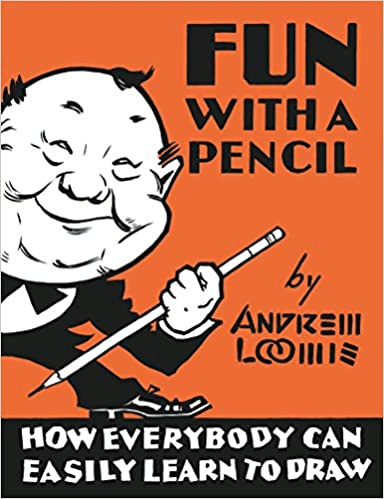
Conclusión: Tu biblioteca, tu arsenal creativo
Al llegar al final de nuestro viaje a través de estos nueve libros imprescindibles, es importante reflexionar sobre el poder transformador que cada uno de ellos puede tener en tu carrera como historietista. Estos no son simples volúmenes de texto; son puertas a nuevos mundos de creatividad, técnica y comprensión profunda del arte secuencial.
Imagina tu estudio de trabajo. En un rincón, “Cómo Hacer un Cómic” de Scott McCloud te susurra los secretos de la narrativa visual. Junto a él, “El cómic y el arte secuencial” de Will Eisner te recuerda la importancia de la composición y el ritmo en tus páginas. En tu escritorio, “Successful Drawing” de Andrew Loomis espera pacientemente para guiar tu mano en la creación de figuras dinámicas y expresivas.
Cada uno de estos libros representa una faceta diferente del arte del cómic:
- Fundamentos técnicos y teóricos
- Perspectivas históricas y culturales
- Análisis profundos de la narrativa y la espiritualidad en los cómics
- Guías prácticas para mejorar tus habilidades de dibujo y narración
Juntos, forman un arsenal completo para enfrentar cualquier desafío creativo que puedas encontrar en tu camino como historietista. Son tus mentores silenciosos, listos para ofrecer consejo y inspiración cuando más los necesites.
Recuerda, el verdadero poder de estos libros no reside simplemente en poseerlos, sino en absorber su sabiduría y aplicarla a tu propio arte. Cada página leída, cada concepto comprendido, es un paso más en tu viaje hacia la maestría en el arte del cómic.
Así que, ¿por qué esperar? Sumerge tus manos en estos tesoros del conocimiento. Deja que te inspiren, te desafíen y te guíen. Con cada libro que explores, estarás construyendo no solo tu biblioteca, sino también tu futuro como un artista del cómic innovador y apasionado.
El mundo está esperando tus historias. ¿Estás listo para contarlas?




